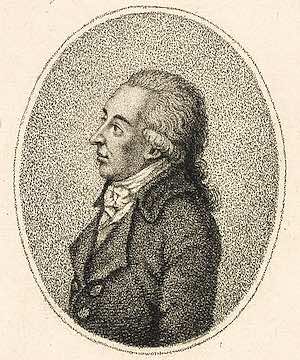Top > Musicians Related to C.P.E. Bach > Rust
This site introduces unknown composer Emanuel Bach (C. P. E. Bach). This English version was translated from Japanese one by ChatGPT.
Friedrich Wilhelm Rust (1739–1796)
ChatGPT4o writes as follows (please note that it may not be accurate):
Friedrich Wilhelm Rust (1739–1796) was an 18th-century German composer, violinist, and keyboard player, renowned for his emotionally expressive works. His music exemplifies the transitional period from the late Baroque to the Classical era and reflects characteristics of the
Empfindsamer Stil (Sensitive Style).

Life
1. Early Life
Born in 1739 near Weimar, Germany, Rust came from a musical family and received music education from a young age.
2. Musical Education
He studied counterpoint and keyboard techniques under Johann Ludwig Krebs, who was influenced by Johann Sebastian Bach. Rust was also inspired by the style of Carl Philipp Emanuel Bach (C. P. E. Bach), pursuing the
Empfindsamer Stil.
3. Career as a Performer
Rust demonstrated exceptional talent as a violinist, performing at various courts. He was also highly praised for his improvisational skills on keyboard instruments.
4. Activities in Dessau
Rust served as the music director at the Dessau court, composing many works that balanced the demands of the court with personal and emotional expression.
Works and Characteristics
1. Keyboard Works
Rust composed numerous sonatas and improvisatory fantasias, reflecting the influence of the
Empfindsamer Stil. His works are marked by ornamentation, sudden modulations, and delicate emotional expression.
[Example]
2. Chamber Music
Many of his chamber works feature the violin, showcasing his skills as a violinist.
[Example]
3. Fusion of
Empfindsamer Stil and Galant Style
Rust’s music harmoniously blends the emotionally expressive
Empfindsamer Stil with the clear and accessible Galant style.
Historical Significance
Friedrich Wilhelm Rust is recognized as a key composer of the mid-18th-century
Empfindsamer Stil, bridging the Baroque tradition and Classical elements. His works resonate with the music of composers like C. P. E. Bach and Mozart, reflecting the stylistic diversity of the period.
ChatGPT4o was asked: “Did Rust study directly under C. P. E. Bach?”
There is no definitive record confirming that Friedrich Wilhelm Rust (1739–1796) studied directly under Carl Philipp Emanuel Bach (C. P. E. Bach). However, Rust’s musical style and expressive qualities suggest that he was indirectly influenced by C. P. E. Bach.
Possible Connection Between Rust and C. P. E. Bach
1. No Direct Mentorship Record
There is no evidence that Rust was a direct student of C. P. E. Bach. However, as a leading figure in keyboard music, C. P. E. Bachʼs influence on Rust’s development is highly plausible.
2. Learning Through Published Works
C. P. E. Bach’s published keyboard sonatas and his theoretical work,
Essay on the True Art of Playing Keyboard Instruments (1753), likely served as significant study materials for Rust. Through these resources, Rust could have absorbed Bachʼs expressive style and techniques.
Musical Influence
1. Shared Characteristics of the
Empfindsamer Stil
Rust’s keyboard works display hallmarks of C. P. E. Bachʼs
Empfindsamer Stil, including emotional depth, sudden modulations, and free rhythmic variations.
2. Pursuit of Improvisation
C. P. E. Bach was renowned for his improvisational skills, and Rust similarly excelled in composing improvisatory fantasias and free-form works. This shared focus suggests a musical kinship.
3. Common Educational Lineage
Rust studied under Johann Ludwig Krebs, a pupil of J. S. Bach. Both Rust and C. P. E. Bach inherited the musical legacy of J. S. Bach, possibly resulting in shared stylistic influences.
Conclusion
While there is no direct evidence that Friedrich Wilhelm Rust studied with C. P. E. Bach, it is highly likely that Bach’s music and pedagogical works had an indirect influence on Rust. Through published compositions and theoretical writings, Rust would have absorbed Bach’s techniques and aesthetics, integrating them into his own music. The similarities between their works suggest a shared engagement with the musical trends of their time.
Site search by Google
Upper< Lower> items
< Musicians Related to C.P.E. Bach> Descendants and Ancestors of J.S. Bach
> Students of W.F. Bach